Art World
‘I Fell in Love With Art There’: As the San Francisco Art Institute Closes, 5 Celebrated Artists Reflect on How the School Shaped Them
Dara Birnbaum, Stephanie Syjuco, and others look back on their experiences at the school.
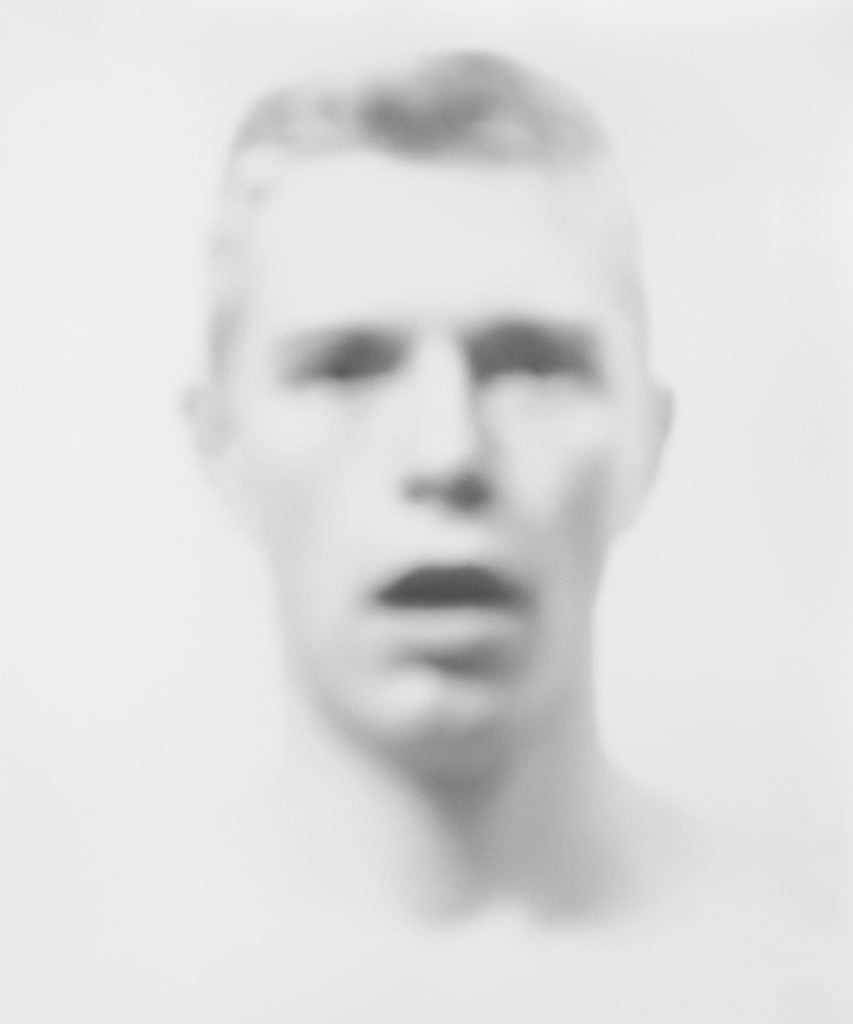
Dara Birnbaum, Stephanie Syjuco, and others look back on their experiences at the school.

Taylor Dafoe

Last week, the San Francisco Art Institute (SFAI) announced that after the end of its current semester, it would suspend its degree programs, stop enrolling students, and close indefinitely, leaving open the possibility that the institution may never reopen.
In a letter sent to students, faculty, and staff, the school’s president, Gordon Knox, and board chair Pam Rorke Levy said they had tried to merge SFAI with a larger educational institution that could keep the art school intact and afloat, but discussions with potential suitors fell through as the coronavirus pandemic hit.
“At this time, it is unclear when instruction will resume, and in what form, pending our efforts to secure additional funding and potentially resume our talks with educational partners,” Knox and Levy wrote. Levy told the New York Times that the school’s total debt is roughly $19 million, a figure that will likely grow in the months to come.
For many, the news came as no surprise. The school, which is just a year away from celebrating its 150th anniversary, has struggled financially for years. Enrollment figures have dwindled over the past decade in the face of a growing student loan crisis in the US and the ballooning cost of living in the Bay Area has only exacerbated the problem.
But for decades, SFAI groomed some of the art world’s best talents. Its long list of notable alumni—including Annie Leibovitz, Paul McCarthy, and Kehinde Wiley—rivals that of other top schools around the world. We asked five of those distinguished alumni to reflect on their experiences at the Bay Area institution and to consider its legacy.
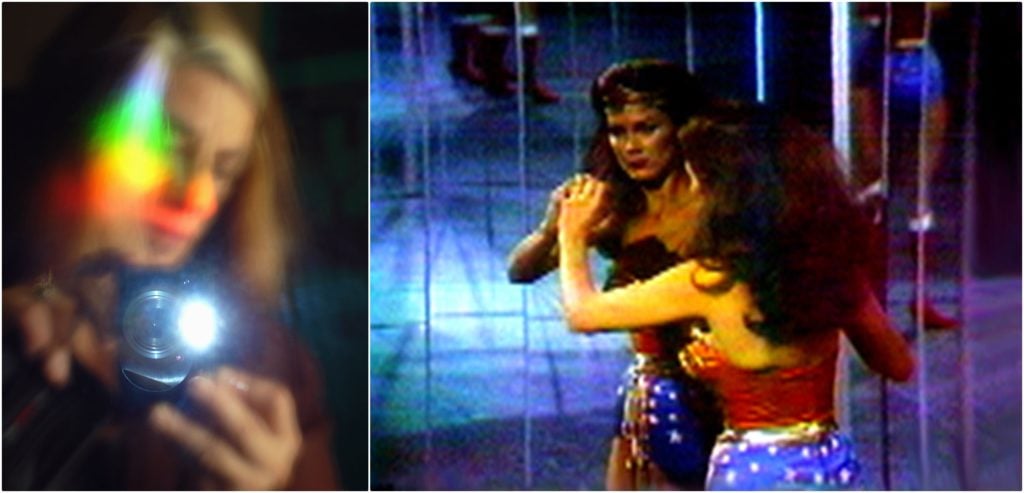
Left, Dara Birnbaum’s Self Portrait, courtesy of the artist. Right: Birnbaum’s Technology/Transformation: Wonder Woman (1978-9). Courtesy of the artist and Electronic Arts Intermix.
I attended [SFAI] from 1971 to 1973, graduating with a degree in painting.
I found that I had incredible freedom at SFAI and that the more I put into it, the more I would get out of it. Since hardly anyone used the library, I virtually had all the books I wanted to myself. Because I showed enthusiasm for drawing, different professors would let me sit in on their classes for free. I remember sometimes doing six hours of drawing per day. I simply fell in love with it. The school’s location was beautiful and the architecture of the original building is more than inspiring.
I was able to fall in love with art there—that’s what I remember the most.
At SFAI I was left to my own devices. Sometimes I would come home and cry after crits in Sam Tchakalian’s class. I am not sure if I would be an artist now if I had not taken the time and energy to be at SFAI during those years. It provided a haven—both heaven and hell—but it certainly formed a strong part of who I am today.
It felt shocking to hear that the SFAI is closing. I feel very badly about this. I had been back there numerous times over the years as a guest teacher, or to lecture. The last time was a few years ago in the graduate division and it still felt very good to me. I also remember going to the Canyon Cinema, so many decades ago, when films were screened there in the SFAI auditorium. I think that awakened a real interest in the moving image for me. I think the original establishment of this institute, seemingly based strongly upon the work of Clyfford Still (who taught there from 1946, the year I was born, to 1950) was, for me, the spine of the institute. I was exposed to painters from the Bay Area like David Park, Richard Diebenkorn, and Elmer Bischoff. It is amazing the number of known, respected, artists who went to or graduated from the SFAI over the years. It provided an atmosphere that ranged from “wild”—my time of being there in the early ’70s in San Francisco—to upright and serious.
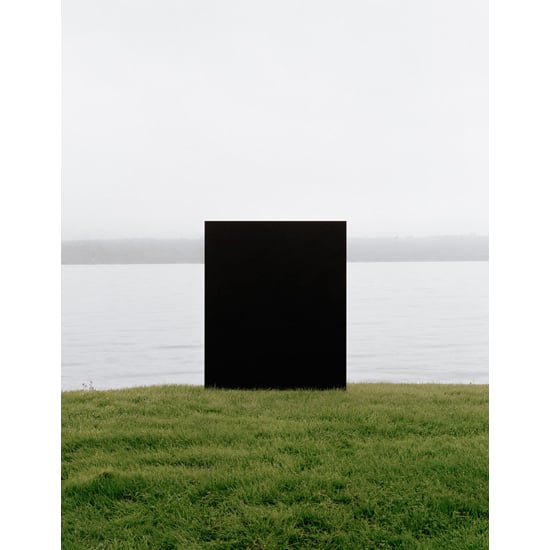
Bill Jacobson, Place (Series) #425 (2010). Courtesy of the artist.
I took my junior year away from Brown University and spent it at SFAI. This would have been from Septmber 1975 to May 1976. Then I returned in 1979 for my MFA.
Those were formative years for me. Having always lived on the east coast, just being in San Francisco in the ‘70s was life-changing. Overall, it gave me the freedom to come out not only sexually but also creatively. The school was permeated by a pretty radical energy—a number of the students had been in Vietnam and were there on the GI Bill. Their work was intense in the best of ways. James Broughton and the Kuchar brothers were teaching film, Jay de Feo’s Rose was wedged into a wall, drugs were everywhere, and the views of the bay were mesmerizing. The massive Diego Rivera mural was extraordinary and felt like a member of the family—it was treated so un-preciously. The front door of the place was always open and anyone could come in and walk around at any time. It all spoke to a complete sense of freedom to make art, and to do whatever we wanted. And don’t forget Arnold Herstand, who served briefly as president and was forced out by a massive months-long insurrection by students, faculty, and trustees, which got pretty wild.
I was fortunate to work closely with Ellen Brooks and Larry Sultan, who encouraged us to make work that was personal and intimate and not to follow trends. Without a doubt, I’d still be an artist if I hadn’t been at SFAI, though it’s likely my path would have been different.
I wasn’t surprised when I heard of the closing, as I sensed the school had been on rocky footing for some time. It’s hard to say specifically what the school’s legacy might be. I suppose it’s summed up in the lives of all the artists who passed through that open door over the last 150 years.

Carol Szymanski, The Phonemophonic Alphabet Brass Band. Courtesy of Carol Szymanski.
I was at SFAI in the mid ’80s. It was a time of great change for me and I still reflect on it a lot. I received my MFA in video and performance art. My main mentors were Howard Fried, Paul Kos, and David Ross, all of whom I admire to this day for their intelligence, wit, and creativity. Too bad there weren’t more women.
Luckily there were quite a few in the school’s intensive visiting artist program, thanks to which I was directly exposed to other great artists such as Vito Acconci, Kathy Acker, Laurie Anderson, Chris Burden, Frank Gillette, Julia Heyward, David Ireland, Joan Jonas, Shigeko Kabota, The Kipper Kids, Linda Montano, Dennis Oppenheim, Nam June Paik, and Lawrence Weiner, to name a few. More often than not we got to know them on a one-to-one, personal basis. Neil Jenny taught us how to play softball. That was cool!
The emphasis was on blurring the boundaries between video/performance and reality/life/real-time. And there were no rules. Or the exception was the rule—a brilliantly free and open experience.
Ours was a small, close-knit department, with no interaction with the other departments. I felt as though I was experiencing something very important about what art and life were and could be. Nothing was saddled with convention or history. It was all about the act of creating and discussing.
It deeply saddened me to hear that the school is closing. Its legacy for me is the understanding that art can be anything, made of anything, seen any way. Art is a way of life.
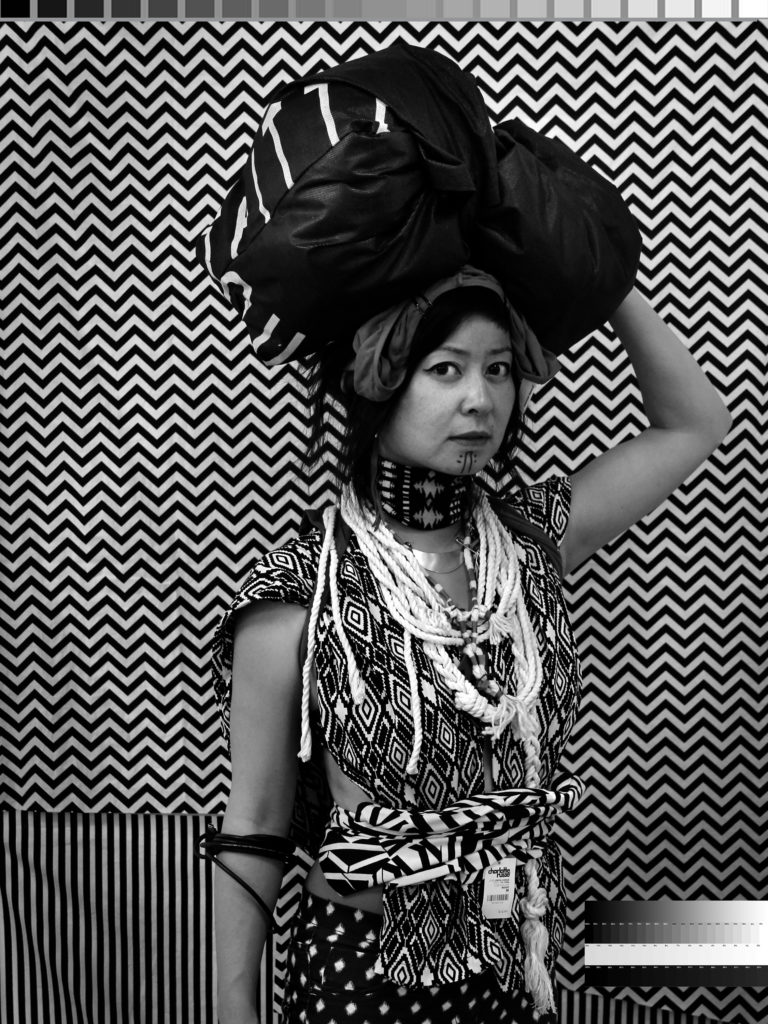
Stephanie Syjuco. Cargo Cults: Head Bundle (2013-16). Courtesy of the artist and Catharine Clark Gallery, San Francisco and Ryan Lee Gallery, New York. © 2018 Stephanie Syjuco.
I was there from 1991 through 1995 as an undergraduate student in the sculpture department.
SFAI has always been super experimental—many students were pushing the envelope in terms of performance, new genres, and conceptual works. If I remember correctly, tuition, when I started, was a fraction of what it costs today, and that made it more accessible to students from all walks of life. People would drop in and out of classes, and some students were only there for a year or two at a time before just drifting off—or spinning out—into other interests in their lives. Getting an art degree didn’t feel like the point of being there, really.
I like to say that the program at SFAI created feral artists. I was able to make artwork without thinking about the market because at the time, there was no market, and SFAI didn’t seem to care about training students toward even thinking about it at all. I think it’s very different for art students right now, who are constantly bombarded with dangling promises of “success” and exposure in a larger art world. Being at SFAI gave me the courage to think outside of this, and probably helped fuel my later projects in social practice and works that didn’t have a specific object trajectory.
Despite the glowing eulogies that will be written, SFAI was also a product of its time, and that included the active presence of misogyny, sexism, racism, and harassment. It wasn’t a utopia, and there could be a bravado that went hand-in-hand with experimental attitudes, leading to acute forms of imbalance and skewed power dynamics that were just left to fester. Wild places could have wild effects, and I could see some of it actively damaging people. Looking back on it, I wish I had had the language to name these dynamics and even the self-awareness to more actively resist them.
The legacy of SFAI is huge and I will always remain thankful that I went there. SFAI felt a bit out of time and place, adhering to the primacy of a fine-arts degree over the decades while other schools added architecture and design programs to bolster their student numbers and financial support. But I do appreciate the purely fine arts focus it had, despite its potentially unmarketable reality. This defiance feels very much like the spirit of SFAI.
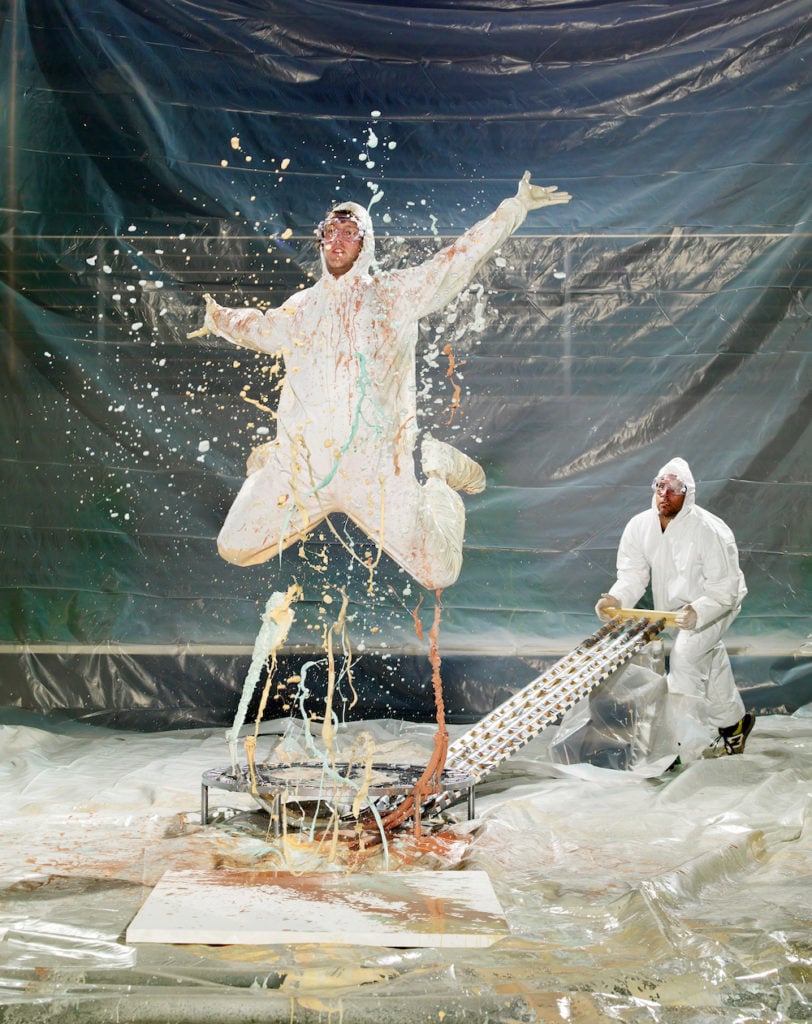
Marc Horowitz, Recessionator (2008). Courtesy of the artist and China Art Objects. Photo: Jeff Minton.
Even though I was only at SFAI for a year, from 2000 to 2001, I can absolutely say that I would not be who I am today without my experience there.
This is an enormous tragedy and a huge hole will be left. While I was there, I noticed the mismanagement. In fact, the reason I attended SFAI for only a year was because the school said they had to pull my full ride and could offer me half tuition. For a while, I had a deal with a few teachers and would show up for classes without paying tuition. Richard Wentworth was there at the time and he brought in Tom Sachs for a couple classes. I couldn’t keep up with school and work and eventually quit.
Part of me thinks they will be back, that this is just a blip like the 1906 quake.